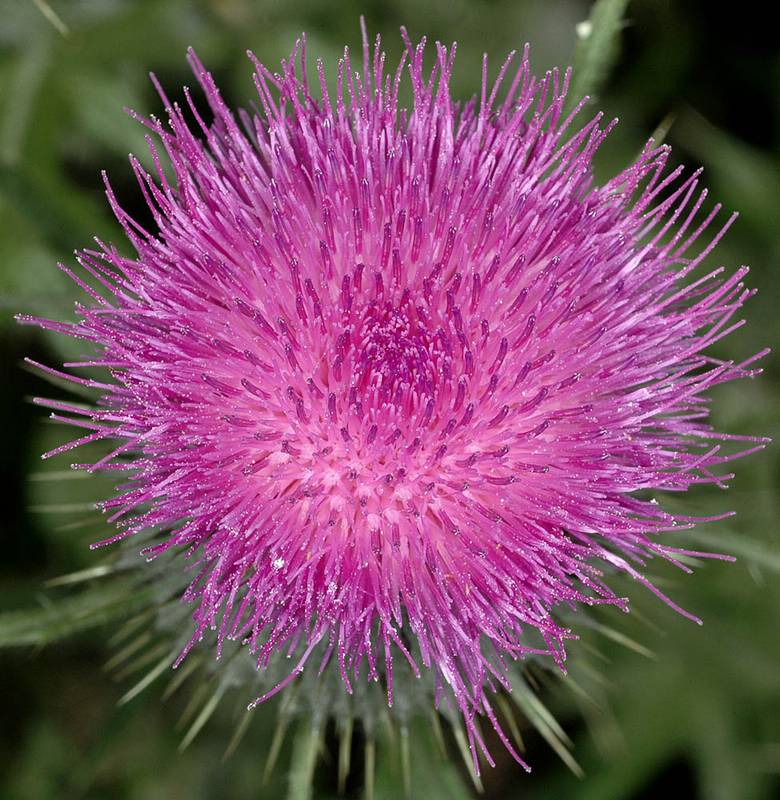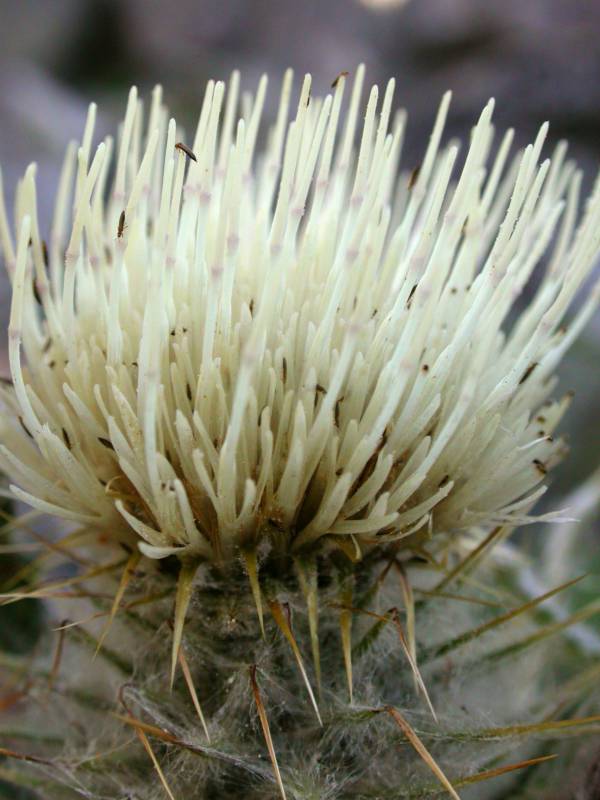Cirsium vulgare
Cirsium hookerianum
bull thistle, common thistle
Hooker's thistle, white thistle
Leaves pinnatifid, the largest again toothed or lobed;
leaves covered with short, pointed hairs above and thinly white-woolly below.
Leaves with some loose, soft hairs above, thinly white-woolly below, narrowly lanceolate, toothed and moderately spiny.
Heads several;
involucre 2.5-4 cm. high, all its bracts spine-tipped;
flowers all ligulate, purple or rarely white.
Heads clustered toward the top of the simple stem in a compact or elongated inflorescence;
involucre 2-3 cm. high, strongly spider-webby, not much imbricate, the bracts all narrow and tapering, the middle and outer with a short, straight spine, the inner often twisted;
flowers all tubular, creamy-white;
receptacle densely bristly.
Achenes less than 4 mm. long.
Cirsium vulgare
Cirsium hookerianum
- Local floras:
BC,
CA,
OR,
WA
- Local Web sites:
CalFlora,
CalPhotos,
Flora NW,
PNW Herbaria
WildflowerSearch
iNaturalist (observations)
USDA Plants Database
- LBJ Wildflower Center
- SEINet
- Plants of the World Online
- Encyclopedia of Life
- Wikipedia
- Google Image Search



